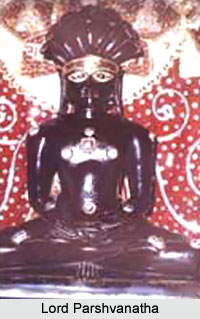 Sri Ner Teerth located in Maharashtra is a Jain pilgrimage centre. The teerth kshetra is situated in the Ner village. The temple is dedicated to Lord Parshvanatha, the twenty-third Jain Tirthankara.
Sri Ner Teerth located in Maharashtra is a Jain pilgrimage centre. The teerth kshetra is situated in the Ner village. The temple is dedicated to Lord Parshvanatha, the twenty-third Jain Tirthankara.
History of Sri Ner Teerth
According to history Sri Ner Teerth dates back to the ancient times. As per reference the idol of Manovanchhit Parshvanatha that is almost 500 years old was brought from Burhanpur. Sri Ner Teerth finds its mention in the 908 Parshvanath Chhand. It is visited and sanctifies by many ascetic saints and acharyas. On the tenth day of the bright half of the month of Vaishakh in the year 1988 of the Vikram Samvat Era the temple of Lord Parshvanatha was repaired and reinstalled. The work was initiated by the sangha under the auspices of His Holiness Panyasapravar Surendravijayji. The idol of Lord Parshvanatha is believed to possess miraculous powers. Devotees from far off places visit the temple to offer their prayers and get their wishes fulfilled. It is said that the idol of Manovanchhit Parshvanatha helps in overcoming grieves and destroys discontentedness.
Temple of Sri Ner Teerth
The temple of Sri Ner Teerth houses the idol of Bhagawan Manovanchhit Parshvanath. The temple has been magnificently decorated with intricate artistic designs. The creative temple work boast about the skills of the craftsmen. The idol of the temple is nearly 50 cm in height and is black in colour. It is seated in a padmasana posture and is surmounted by serpent`s hoods. The idol of the Lord looks very calm and serene. It has been beautifully carved and appears to be very appealing.
The Temple of Sri Ner Teerth organises many annual gatherings and functions. Every year a fair is held here on the eleventh day of the bright half of the month of Phalguna. There are provisions for dharamshalas or rest houses for the pilgrims. These are well equipped with all modern facilities. The temple is enclosed by scenic beauty that mesmerises and fascinates the pilgrims. The calm and tranquil environment and the surrounding greenery make it a suitable place for religious activities. The kshetra is well connected to road, rail and air. Taxi services and bus services are easily available here. The nearest railway station is located at Dhulia at a distance of 27 kilometers from here.




















